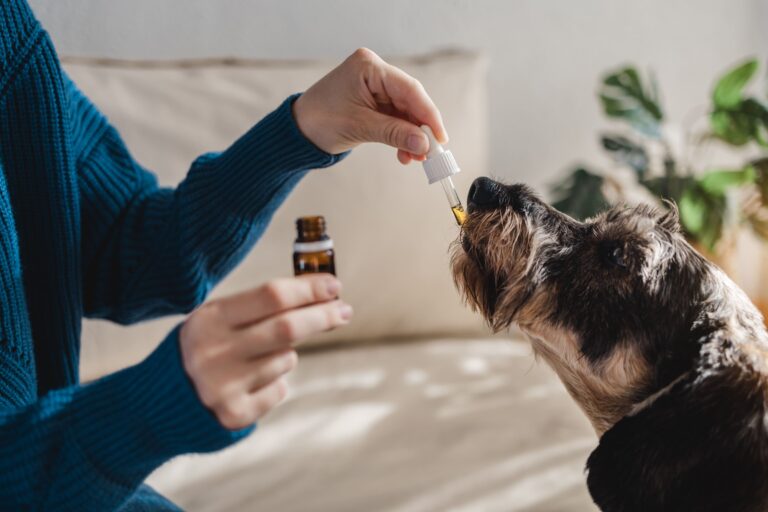Is it safe for dogs to eat peas? Here’s what you need to know
It’s a common question among pet owners: can dogs eat peas? While some people may assume that it is not safe for their furry friends to consume this type of food, the truth is that peas can actually provide numerous benefits for dogs. Peas are a nutrient-packed vegetable that can contribute to your dog’s overall health when added to their diet in moderation.
The potential benefits of feeding peas to dogs
Peas are a nutritious and tasty addition to a dog’s diet that can offer a range of potential health benefits. Here are a few ways that feeding peas to dogs may be beneficial
High protein content
Peas are a good source of protein, which is an important nutrient for dogs. Protein helps to support the growth and repair of tissues, and it is also necessary for the production of enzymes, hormones, and other important molecules.
Fiber
Peas are a rich source of fiber, which can help to support healthy digestion in dogs. Fiber helps to bulk up the stools and keep them moving through the intestines, which can help to prevent constipation and other digestive issues.
Nutrient-rich
In addition to protein and fiber, peas are also a good source of other important nutrients such as vitamins A, B, and C, as well as minerals like iron, potassium, and zinc. These nutrients can help to support overall health and well-being in dogs.
Weight management
Peas are low in calories and fat, which makes them a good option for dogs that are trying to maintain or lose weight. Adding peas to a dog’s diet may help to fill them up without adding excess calories, which can be beneficial for overweight or obese dogs.
Antioxidant properties
Some studies have suggested that peas may have antioxidant properties, which may help to protect against cell damage and support overall health.
The potential risks of feeding peas to dogs

While peas can be a nutritious and tasty addition to a dog’s diet, it’s important to be aware of any potential risks or concerns that may be associated with feeding peas to dogs. Here are a few potential risks to consider:
Digestive issues: Some dogs may experience digestive issues when they eat peas, such as gas, bloating, or diarrhea. These problems may be more likely to occur if the dog is not used to eating peas, or if they eat too many peas at once. It’s generally recommended to introduce peas gradually into a dog’s diet, starting with small amounts and gradually increasing the amount over time.
Allergic reactions: It’s possible for dogs to have an allergic reaction to peas, although this is relatively rare. Symptoms of a pea allergy in dogs may include itchy skin, redness, swelling, and hives. If you suspect that your dog is experiencing an allergic reaction to peas, it’s important to seek veterinary care as soon as possible.
Toxic substances: Some types of peas may contain toxic substances that can be harmful to dogs. For example, frozen or canned peas may contain additives or preservatives that could be toxic to dogs. It’s generally recommended to feed fresh, cooked peas to dogs, rather than frozen or canned peas.
Overall, it’s important to be aware of the potential risks associated with feeding peas to dogs, and to consult with a veterinarian before making any changes to your dog’s diet. By taking a cautious and informed approach, you can help to ensure that your dog stays healthy and happy.
Guidelines for safely feeding peas to dogs
If you’re considering adding peas to your dog’s diet, it’s important to take a safe and careful approach

Start with small amounts: When introducing any new food to a dog’s diet, it’s important to start with small amounts and gradually increase the amount over time. This can help to reduce the risk of digestive issues and allow the dog’s digestive system to adjust to the new food.
Cook or puree the peas: Peas are generally easier for dogs to digest when they are cooked or pureed. This can help to reduce the risk of digestive problems and make the peas more palatable for the dog.
Avoid frozen or canned peas: Frozen or canned peas may contain additives or preservatives that could be toxic to dogs. It’s generally recommended to feed fresh, cooked peas to dogs, rather than frozen or canned peas.
Consult with a veterinarian: If you’re not sure whether it’s safe for your dog to eat peas, or if you have any concerns about introducing a new food into your dog’s diet, it’s always a good idea to consult with a veterinarian. They can provide guidance and recommendations based on your dog’s specific needs and health status.
By following these guidelines, you can help to ensure that your dog stays healthy and happy while enjoying the potential benefits of eating peas.
Conclusion
In conclusion, peas can be a nutritious and tasty addition to a dog’s diet that may offer a range of potential health benefits, such as improved digestion, weight management, and a boost of essential nutrients. However, it’s important to be aware of the potential risks and concerns that may be associated with feeding peas to dogs, such as the possibility of digestive issues or allergic reactions. To ensure the safety and well-being of your dog, it’s always a good idea to consult with a veterinarian before making any changes to your dog’s diet.
Subscribe to our weekly newsletter below and never miss the latest article.







